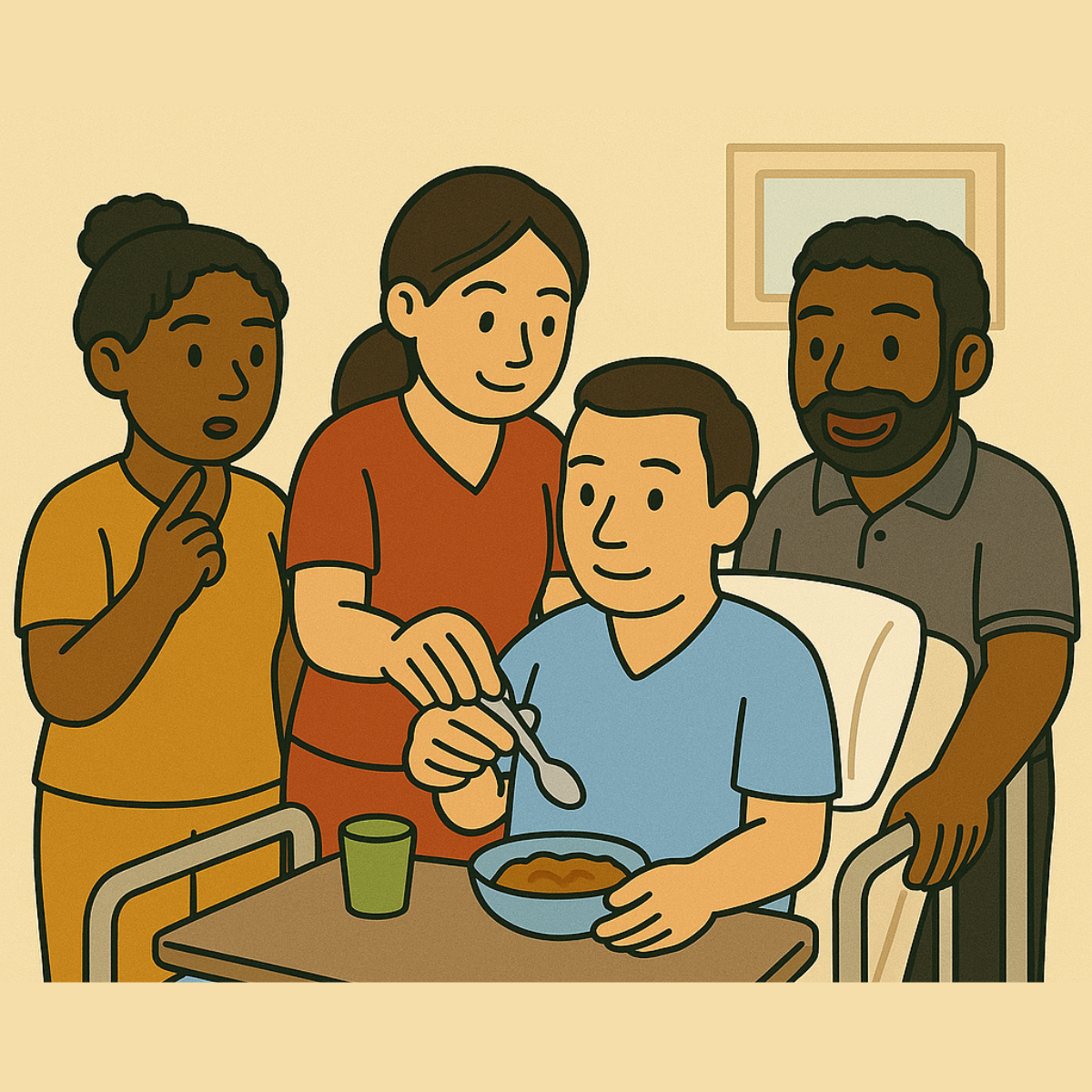When my grandmother had her stroke, I remember seeing three different therapists walk into her room—one after the other. First came the speech therapist, then the occupational therapist, and finally the physical therapist. They were kind, knowledgeable, and patient. But what really amazed me was how they worked together like a well-oiled machine.
That experience opened my eyes to something that too often goes unnoticed in healthcare: the power of collaboration in rehabilitation. Individually, each therapist brings essential expertise to the table—but when they unite, SLP, OT, and PT become a force for transformational recovery.
Let’s take a deeper look into why interdisciplinary teamwork is not just ideal—but essential—for patient-centered care.
💡 Affiliate Disclosure: This post may contain affiliate links. If you click and purchase, I may earn a small commission at no extra cost to you. As an Amazon Associate, I earn from qualifying purchases. I only recommend tools I trust and use.
🧠 What Is Interdisciplinary Rehab—and Why Does It Matter?

In interdisciplinary rehab, therapists from different specialties—speech-language pathologists (SLPs), occupational therapists (OTs), and physical therapists (PTs)—collaborate with a shared treatment plan. Unlike a multidisciplinary approach, where each discipline works in parallel, interdisciplinary teams coordinate in real-time to improve patient outcomes, reduce therapy overlap, and enhance communication.
This approach leads to:
- More cohesive goal-setting
- Fewer redundancies in care
- Better progress tracking
- Enhanced patient satisfaction
📌 According to the World Health Organization, integrated rehab services improve function, reduce hospital stays, and support long-term independence.
🤝 The Unique Role Each Therapist Plays

Let’s break down what each professional brings to the table—and how they complement one another.
🗣 Speech-Language Pathologist (SLP)
Focus: Communication, cognition, swallowing
- Assess and treat speech/language deficits
- Manage swallowing disorders (dysphagia)
- Support cognitive-linguistic therapy
Helpful Tool:
👉 Low-Tech AAC Flip Book – ideal for collaborative bedside communication
👉 Speech Therapy Mirror – great for articulation work during co-treatment sessions
✋ Occupational Therapist (OT)
Focus: Functional independence and daily living
- Help with dressing, grooming, and adaptive techniques
- Address sensory processing, fine motor skills
- Facilitate postural alignment for communication and feeding
Helpful Tool:
👉 Therapy Putty for Hand Strengthening
👉 Weighted Lap Pad for Sensory Regulation
🦵 Physical Therapist (PT)
Focus: Mobility, strength, balance
- Assist in walking, transferring, and body mechanics
- Build endurance and coordination
- Promote safety with ADLs and mobility devices
Helpful Tool:
👉 Regular Gait Belt
👉 Balance Pad for Rehabilitation
🔄 How Interdisciplinary Teams Collaborate in Practice

Here’s how this looks in action:
- During a co-treatment, an SLP might work on cognitive sequencing while the OT facilitates a grooming task.
- A PT could position the patient safely for feeding, while the SLP assesses swallowing.
- All three may meet weekly to align their goals, adjust interventions, and celebrate progress as a team.
Shared Tools for Coordination:
👉 Whiteboard Clipboard – great for writing down goals during sessions
👉 HIPAA-Compliant Therapy Notebooks – excellent for coordinated care notes
👉 Rehabilitation Team Communication Board – visual support for patients and team
💪 Why Teamwork Improves Patient Outcomes

When therapists collaborate, the patient:
- Receives comprehensive care that treats the whole person, not just one issue
- Feels more supported, seen, and empowered
- Shows faster and more sustainable progress
- Gains consistent reinforcement across therapies
A 2018 review published in the Journal of Rehabilitation Medicine emphasized that interdisciplinary teamwork is essential in physical and rehabilitation medicine, improving not only functional outcomes but also communication, patient satisfaction, and long-term success. By sharing goals, coordinating strategies, and delivering cohesive care, SLPs, OTs, and PTs can dramatically enhance a patient’s quality of life—especially in complex rehab scenarios.
📚 Resources for Continued Learning
- World Health Organization – Rehabilitation
- American Speech-Language-Hearing Association
- American Occupational Therapy Association
- American Physical Therapy Association
🧡 Conclusion: Together, We Heal Faster
Recovery isn’t linear—and it’s certainly not solitary. When SLPs, OTs, and PTs work together, the road to healing becomes smoother, faster, and more empowering for everyone involved.
Whether you’re a therapist, student, caregiver, or patient—recognize the value of collaboration in every step toward independence.
📥 Want Free Therapy Tools at Your Fingertips?

Download your free quick reference sheets for OT, PT, and ST—perfect for therapists, students, or anyone in the field.
📘 OT Pocket Guide available now
📕 ST Pocket Guide releasing soon
📗 PT Pocket Guide launching in October
👉 Download Your Free Quick Sheets
💬 We Want to Hear From You

Have you ever seen a great therapy team in action? What made the difference?
👇 Share your story in the comments—we learn best when we learn together.

Leave a Reply